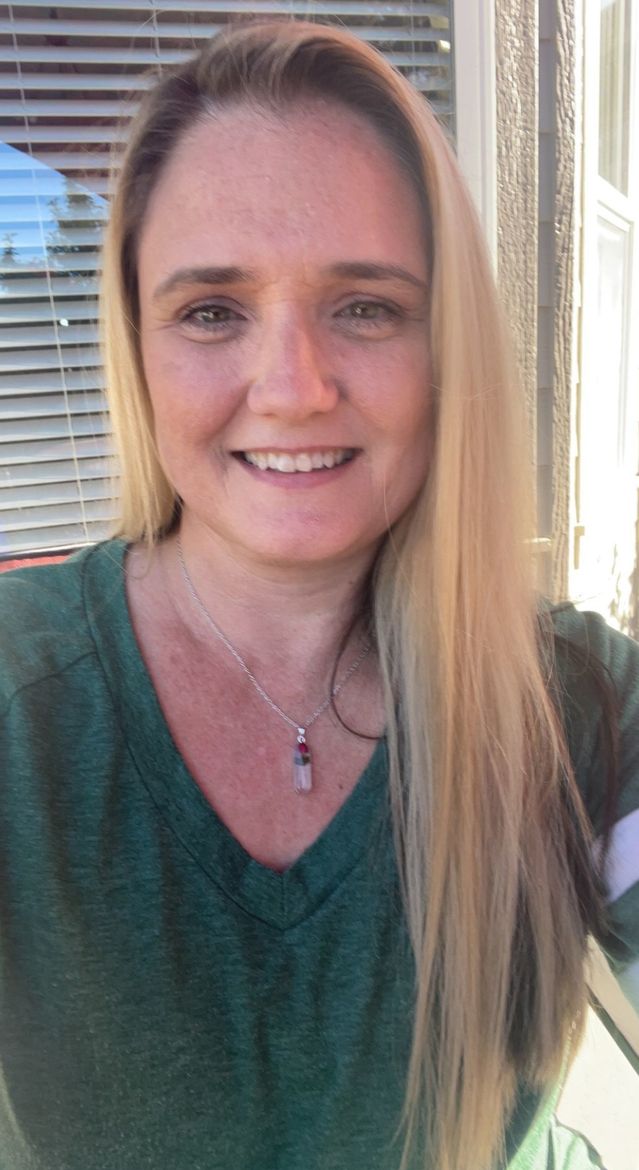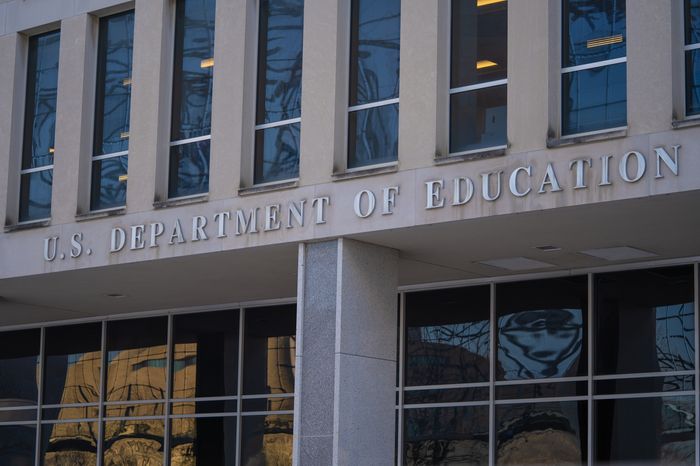When Trisha Volosin enrolled in a college as a single mom, she hoped to become the first in her biological family to earn a bachelor’s degree. Little did she expect that experience to saddle her with thousands of dollars in student-loan debt 20 years later.
At the age of 24, with a newborn in hand and as the sole breadwinner for her family, Volosin enrolled in a for-profit online college, the now-defunct Kaplan University, with the goal of earning her accounting degree and securing a full-time role as an accountant at her current firm.

The two-decade journey through university has left Trish Volosin owing $83,721.71.
Trish Volosin
But her chance to upgrade her life soon became a nightmare: Personal tragedy struck, forcing her to take a step back, and the college’s confusing directions on the credits and classes she needed to take to graduate delayed her graduation and added additional costs to the degree.
Money from tax refunds, money from her foster family, and extra paychecks from her accounting job, all went towards paying off her degree, which she started in 2002 and finished in 2014.
The two-decade journey through university has left Volosin owing $83,721.71 in outstanding loans.
Volosin and her current husband have been dutifully paying down that debt, despite feeling like Kaplan had made her take additional credits and pay through the teeth for the degree she didn’t finish at the college. Kaplan has been the subject of several lawsuits, including one over the use of employing unqualified instructors to teach medical assistant coaches at its Texas campuses.
“‘We’re really scared about when things kick back in, because everything’s been really tight as it is.’”
Prior to the pandemic payment pause on federal student loans that former President Donald Trump enacted in March 2020, she had been paying over $300 a month in debt she owed to the Department of Education.
But with inflation pushing the cost of everything — from gas to child care — higher, Volosin said she’s worried about what will happen when the payment pause expires.
“We’re really scared about when things kick back in, because everything’s been really tight as it is,” Volosin, a native of Medford, Ore., told MarketWatch. “And if those kick back in, it’ll really kill us.”
Volosin’s situation is much like the millions of other student borrowers who face a resumption of monthly loan payments come September.
Some 40 million borrowers hold $1.6 trillion in federal student loan debt. The payment pause is set to expire on Aug. 31. Meanwhile, President Joe Biden is reportedly considering canceling at least $10,000 in student debt per borrower by late summer, according to the Wall Street Journal.
Should the pause expire, without any debt cancellation, Volosin estimated that she would owe $400 a month on her student debt — about 10% of her household income.
“We went from paying $150 in gas a month for my husband to get to and from work to now paying over $400 per month,” she added. “Our groceries have doubled in price, and we aren’t getting as much as we did a year ago at this time. It would mean not getting to do anything fun for and with our little ones.”
Volosin’s path to college was a complicated one
Going through a “horrible childhood” where physical abuse was common, Volosin reported her father to the authorities at the age of 12, and she and her three siblings entered the foster-care system.
It was then that she decided to go to college. “No one graduated high school. No one went on to college,” she said.
After going through various homes, she ended up with a family that took her in as their own. She graduated high school six months early. She had even been accepted into the University of Colorado Boulder.
But she couldn’t afford it at the time. She had left her foster family’s home after falling out with them and was living in a shelter home.
By the age of 24, Volosin was a mother. It was then when she “really felt the pull to go back to college,” she recalled. “I really needed to give my daughter something to look up to, because none of my family was good. I wanted her to see that I was capable of doing it.”
She was also not getting the role she wanted because she didn’t have a college degree. So cradling her newborn, Volosin looked up online college options that she could handle while working full-time.
“I was the sole provider of our family,” Volosin said. “We were low-income, and so I couldn’t give up my job.”
She tried out the University of Phoenix. It didn’t work. Then she tried Kaplan University, which was later taken over by Purdue University in 2017. Kaplan accepted her, and she began her college journey.
Kaplan has been the subject of various investigations — for running an unaccredited program that left one student with more than $50,000 in debt, to being accused of exploiting financial-aid systems to profit by a congressional committee.
Kaplan also paid a fine of more than $1.3 million to the Department of Justice for its Texas campuses hiring unqualified instructors for a critical program; the university did not admit liability.
(The university did not respond to a request for comment.)
Volosin experienced a few personal losses that quickly derailed her plans: Her sister, her mother, and her stepmother passed away; and she went through a divorce.
“It was all so hard and all at once, but I ended up not even focusing on school,” she recalled. She ended up withdrawing temporarily.
After pulling herself together, overcoming the tragedies, she re-enrolled, after paying a balance.
“‘$900 a month cash — as a single mom. I barely was making it. I think I was making $11.85 an hour then.’”
But she kept hitting speed bumps. She first had to pay a balance to get back into the school, which she did. Volosin said the school informed her that her degree requirements had changed. That delayed her graduation.
In an attempt to graduate sooner, Volosin tried to take on additional credits at Kaplan. They told her that was not allowed. She was then asked to pay even more to pay for the courses, since she had taken the maximum amount of financial aid allowable. That added $993 to her monthly expenses.
“$900 a month cash — as a single mom. I barely was making it,” Volosin said. “I think I was making $11.85 an hour then.”
Frustrated, at that point, she decided to change tack. Maybe the school was the problem, not her. Volosin went to a local university in Oregon.
She found out that she couldn’t enroll there, because she had no financial aid left to draw on, thanks to Kaplan. Undeterred, she found a way to speak with the academic advisors at Southern Oregon University.
Finally, she caught a break. The school said she could take some of her credits to qualify for an accounting degree. She re-enrolled, once again.
She used tax refunds. She had reunited with her foster family, who helped out as well. She used extra paychecks she got from her accounting gig.
In 2014, she finally became a proud first-generation college graduate.

Volosin’s debt is owed to the Department of Education, which disburses financial aid to thousands of accredited colleges across the country.
PHOTO: Getty Images
But Volosin’s battle through the for-profit college is not an uncommon one, Kyra Taylor, a staff attorney at the National Consumer Law Center, told MarketWatch.
“We frequently see students who attended multiple institutions, and often attended multiple types of institutions — for-profit, non-profit, online, in-person, etcetera — in their pursuit to get an education that will open up more job opportunities,” said Taylor, but the credits do not transfer neatly.
“So when a student tries to pick up where they left off, they are told to go back to the beginning and start their program at the new school without any credit for what they’ve learned in the past,” she said.
This leaves many “who try to finish their degree after periods away from school … often saddled with significantly more debt,” Taylor stressed.
“‘We frequently see students who attended multiple institutions, and often attended multiple types of institutions — for-profit, non-profit, online, in-person, etcetera.”
The attorney advised borrowers who were in Volosin’s shoes to assess whether they can apply for debt relief from the Education Department, particularly if they had been misled by the school.
These borrowers “should consider applying for borrower defense to repayment, a government program which cancels the debts of borrowers who were harmed by a school’s misrepresentations or omissions when they were enrolling,” Taylor explained.
“The reality is that borrowers often do not know what relief is available and don’t know that all that stands between them and complete federal loan cancellation is an application to the Department of Education.”
For Volosin, the debt has hung over her like a shadow. It has followed her through another marriage, and now with three kids now in tow, it continues to be a substantial part of the financial burden she’s facing.
With the payment pause, at least there was a reprieve. “With the student-loan pause we have been able to cover all of our bills and thankfully we had a little wiggle room for the cost of inflation,” Volosin said.
But should an emergency arise with their home, or their car, that would be something their family wouldn’t be able to afford, she added.
And as the president mulls canceling debt, Volosin said any help from the government was welcome.
“Canceling $10,000 of our student loan would not help in our situation since we owe so much, and payments are based on income,” Volosin said. “We wouldn’t say no, but it won’t change anything for our family.”
Write to: [email protected]
